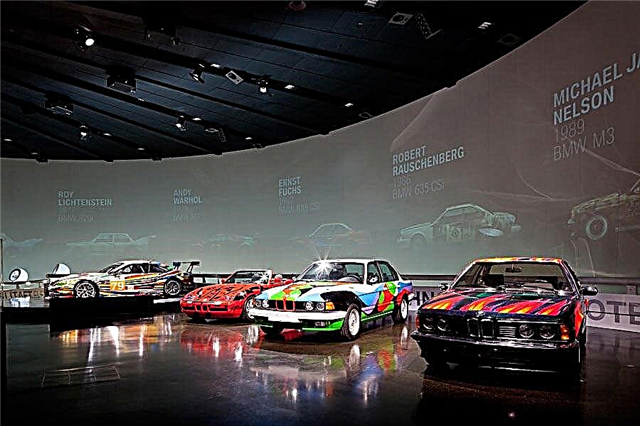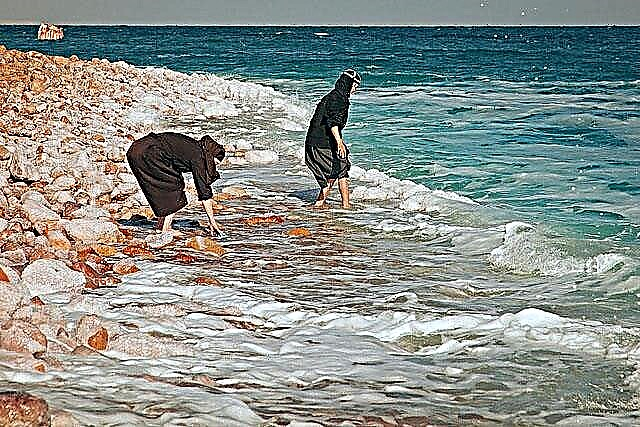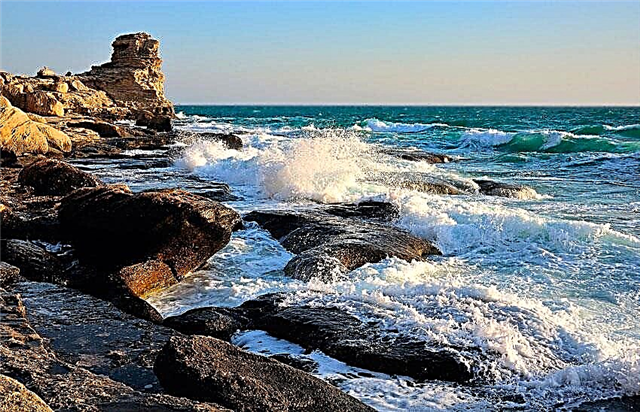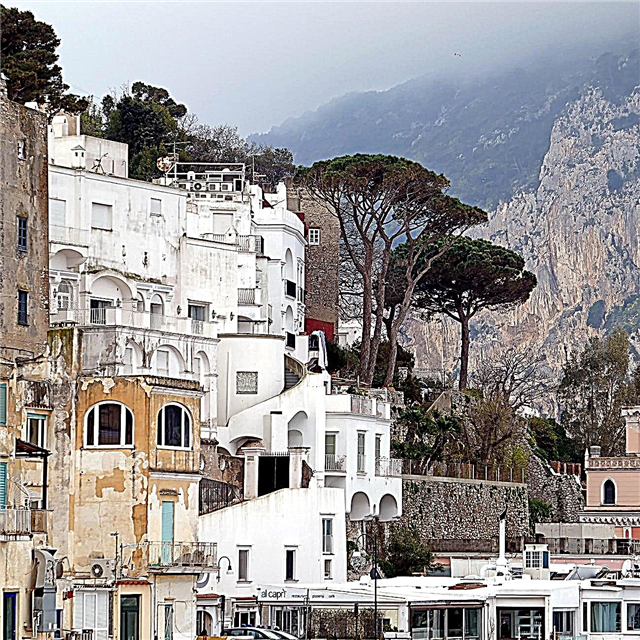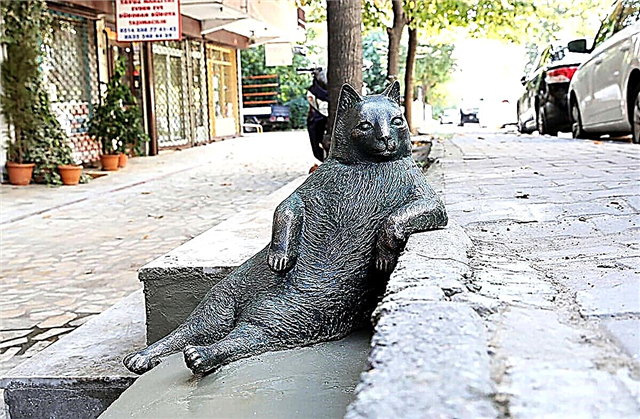Istanbul is an ancient city that once bore the name Constantinople. It was influenced by different cultures, currents and religions, so its appearance from district to district was different at all times. There are many attractions in the area, but for some reason the monuments are not among the main ones. They were overshadowed by architectural beauties, squares and colorful local shops. However, this does not mean that there is nothing to see in Istanbul in terms of street sculpture.
The bias in the issue of monuments is made towards history and people important both for the city and for the country. There are several monuments to Ataturk, his comrade-in-arms Khalida Oedip Adyvar, and the murdered journalist Ilkhan Selcuk. There are also unusual monuments, such as the "Orient Express" steam locomotive and the famous, thanks to the Internet, cat Tombili.
Historical and modern monuments of Istanbul
List of the most famous monuments and sculptures of the city.
Monument "Republic"
Pietro Canonica erected one of the main monuments in Turkey in 1928 after the end of the War of Independence. The 12-meter-high monument can be found at Taksim Square. The passage of the stone arch, built in the oriental style, is filled with bronze sculptures of soldiers and civilians. Among them are Ataturk, his associates, as well as Soviet statesmen. This was how gratitude was expressed for the military support.

Column of Constantine
It is located on Čemberlitas square. Installed in 328 at the Forum of Constantinople. The height is just under 35 meters. Initially it was taller, for some time it was crowned with a cross. Made of porphyry. Repeatedly suffered from the elements and wars. It is regularly strengthened and restored. Together with other monuments of the historical part of the city, the column is included in the UNESCO World Heritage List.

Snake column
Refers to the territory of Sultanahmet Square - the main one in Istanbul. In the past, it was part of the sacrificial tripod. Made from the weapons of the dead soldiers who participated in the Greco-Persian wars. Stood in Delphi, and then for some unknown reason was transported to Constantinople. The summit at that time was decorated with three snake heads. In 1700, the column was partially destroyed. One head survived, which migrated to the museum.

Egyptian obelisk
It also bears another name - the obelisk of Theodosius. Dated to 1460 BC. There are other ancient monuments in the city borrowed from foreign lands. However, this one was the best preserved and was taken directly from Egypt. The quadrangular monolith is crowned by a regular pyramid. The height is now about 25.5 meters, in the past it was a third higher. Made of pink granite with inscriptions on the edges.

Monument to the cat Tombili
This wandering cat lived in Gulech Lane and the surrounding area. He chose a comfortable place for himself by one of the cafes. Because of the pose that the plump four-legged sly man took, he became popular on the net. Tourists flocked to the previously unremarkable area to look at the cat. After Tombili's death, the locals threw themselves off and paid for the creation of a monument in his honor. The opening took place in 2016.

Monument to Ataturk in Kadikoy
Kadikoy is a district located in the Asian part of Istanbul. It is also called bohemian. The monument to the first president of Turkey is located in the central part of the square next to the theater and the Philharmonic. The composition is installed on an artificial elevation. Ataturk is depicted teaching two children the Latin alphabet. The convenient location of the monument makes it possible to arrange interesting photo sessions here.

Bull statue
The monument can be found on the Altiyol square in the Kadikoy region. Isidore Jules Bonneur has repeatedly created sculptures of bulls throughout his career. The Istanbul version was completed in 1854. He came a long way to find himself in Istanbul in the 20th century: Wilhelm II presented the sculpture to Enver Pasha. The bull, also called God Heikeli, was installed in its present place only in 1976.

Column of Marcian
In the 5th century, a triumphal Roman pillar was erected at the forum of Constantinople. The name of the city has changed, the peoples have become a thing of the past, and the monument continues to be located in the same area. It can now be viewed in the Fatih area. The buildings around were dense before the big fire, now they have made an area here. The column is made of granite, and its height together with the pedestal is about 17 meters.

Monument to Mehmed II the Conqueror
Located in the center of the boulevard in the Fatih area. The composition occupies a large area and consists of several components. The base is made of stone. There is a large unfinished arch on it. The design made it possible to create a sculpture of the Sultan himself, as if floating in the air on his mighty steed. Other bronze characters are sitting or standing nearby, talking among themselves, as if not noticing Mehmed II.

"Manufacturers"
Located on one of the streets near the Grand Bazaar. The monument turned out to be both suitable for the area and contrasting with it. There are many shops in the area, so the work of a manufacturer is appropriate here. But there is an incredible bustle, and he froze and seems peaceful. The man is holding a partially unfolded tissue roll. There are benches around, and some passers-by sit down right at the monument to take a breath.

"Simit seller"
In 2010, simit was recognized as the most popular of the national dishes and products of Turkey. This is a type of bagel that is easy to prepare and enjoyable for breakfast or as a snack. The monument was erected on a specially made stone. The authors captured the moment the sim was sold to the buyer. One - counts the change in his hand, the other - holds out a bagel. The composition came out sincere.

Monument of the Republic and Democracy
The column is made of shiny metal. Its height is 35 meters, and its diameter is 3 meters. In the foreground is the statue of Ataturk, the symbol of democracy and the young Turkish republic. In his hands he holds a book. There are also sculptures of a boy and a girl around the perimeter. The monument has a lot of symbolic, but the locals do not have a particularly reverent attitude towards it: they can easily put a car in the cavity under the column on a hot day.

Monument to Hayraddin Barbarossa
Located near the Maritime Museum. Locals also call it a monument to the corsairs. Three figures are set on a pedestal in front of an angular stele. In the center of the composition - Admiral Hayraddin Barbarossa himself, and on the sides - the banner bearer and the sailor. Conventionally, the trinity is placed on the bow of a ship sailing on the waves. Within walking distance is the tomb of Barbosa, built during his lifetime.

Monument to Manas the Magnanimous
Opened in 2017, the project was funded by Temirlan Sarlykbek Uulu. The ceremony was attended by officials of the Kyrgyz Republic. The hero of the Kyrgyz folk epic sits, arms outstretched, on a mighty horse, carrying him to new achievements. Land in the Beyoglu region was allocated for the monument to Manas the Magnanimous. The picturesque Syutluce Park offers a beautiful view of the Golden Horn Bay.

Monument to the port worker
Installed in 2012 in the Sultanahmet area. Nearby - the port and the Bosphorus: about 500 meters to them. The bronze monument, as it were, "hid" behind the corner of the building. Because of this, the survey on it cannot be called successful from all points of the district. It depicts a sculpture of an unremarkable port worker, who drags another load from one place to another. His pose emphasizes fatigue: this is the idea of the authors of the project.

Gothic column
The exact date of creation is unknown. The monument is dated from about III-IV centuries. Height - 18.5 meters, material - marble. The name of the column was given by an inscription in Latin, made at the base: the monument is dedicated to the victory of the Romans over the Goths. The circumstances of his appearance in the city are unclear.However, considering the time of its origin and general condition, the column is considered to be one of the most important sights of Istanbul.

Monument to Ashyk Veysel
Located in Gulhane Park. Veysel Satyroglu is a folk storyteller, a representative of the last generation of his creative craft. Poetry for musical instruments is a practically lost genre in modern Turkey. A life-size bronze sculpture is located in one of the alleys. Veysel Satyroglu is dressed in a secular suit, sits on a small stone ledge and plays the saz.

Monument to Ataturk in Gulhane Park
The very first sculpture of a revolutionary, president and "father of the nation". Installed in the city's most visited park. Its name translates as "yard of roses". Since the end of the 19th century, the park has been open to everyone, but for some time it was restored and became available again in 2001. The monument to Ataturk stands near the central entrance. The politician is depicted in a business suit and sitting on a chair.

Freedom Monument
Dedicated to the soldiers who defended Parliament in 1909. If then the supporters of the expansion of freedoms had not resisted, then Turkey would have returned to an absolute monarchy with the sultan at its head. Work on the creation of the monument was completed in 1911. The monument is a cannon shooting into the sky. The remains of 74 soldiers were buried nearby, a park was laid out, tiles were laid on the paths. Over the years, the monument has become a symbol of democracy.

Monument to the Martyrs of Aviation
The term "martyr" in Turkish is used to celebrate the heroism of the deceased. The memorial is a column erected in 1916. It is dedicated to the pilots who lost their lives after the crash of their monoplane two years earlier. The height of the structure is 7.5 meters. Every year a commemoration ceremony is held next to the monument. It sometimes covers the entire Fatih Square, where the column stands.

"Akdeniz"
One of the most famous sculptures in the city. It appeared in 1980 on Büyükdere Avenue. Now it occupies a site on Istiklal Avenue. The word "Akdeniz" in Turkey is called a part of the Mediterranean coast. Ilkhan Koman portrayed him as the figure of a woman who opened her arms. He used sheet metal and made 112 strips 12 mm wide. The monument looks more advantageous from a distance.

Monument to Abdi Ipekchi
In honor of the former editor of the country's main newspaper, Milliyet, not only is a monument erected, but the shopping street on which it is located is also named. The monument was placed on the very spot where Abdi Ipekchi was killed in 1979. The composition is a small arch: in the center there is a bust of the editor, and on the sides there are two figures holding hands. The years of life and the name of Ipekchi are written on a small pedestal.

Steam locomotive-monument "Orient Express"
It is located at the operating railway terminal of Haydarpasha station. Before being a monument, the steam locomotive made real flights between Europe and Asia. This route became known primarily due to the detective work of the same name. Also, politicians, artists and writers traveled on it. The locomotive was repainted and partially sealed before installation.

Monument of Peace and Culture
The monument was installed in 2008. It is a massive bowl held by three hands. There are discrepancies regarding the symbolism of the monument. A less popular version says that the number of hands indicates the Turkish, Greek and Armenian peoples. The more popular one is based on the main religions of the city: Islam, Christianity, Judaism. It is emphasized that they manage to get along peacefully and serve for the good in general.

Monument to Ali Suavi
Installed on a street named after the journalist and researcher Ali Suavi. It is also called the “street of artisans”. Small workshops are found at every step; there are craftsmen working right in the fresh air. The monument is a large book. On it are a scroll, a stack of smaller books and a bust of Suavi. The composition has lost its former luster and needs restoration.

Monument to Alex de Sousa
In 2012, fans of the Fenerbahce football club raised money and obtained permission to install a bronze statue of their idol. Brazilian Alex de Sousa ended up in Turkey in 2004, earn the captain's armband, won three championship titles and left, 8 years after the scandal with the coach. The fans were on the player's side, and Recep Tayyip Erdogan, who was then prime minister, arranged a meeting with Alex to support him.

Monument to Ugur Mumju
Represents the head of a journalist protruding from the wall. Ugur Mumju was involved in investigating corruption and criminal activities of influential people. He was blown up in his own car in 1993. The crime was not solved, the secret services were also interested in the death of the reporter. Memorial events are held annually at the monument. In 2017, the memorial was desecrated, taking away some of the things.

Bust of Khalida Oedipus Adyvar
The snow-white monument is dedicated to one of the most famous feminists in Turkey. Khalide Oedipus Adyvar was an associate of Ataturk, served in the army when her country was fighting for independence, and was also engaged in all kinds of social activities. She considered the passivity of the oppressed themselves to be the main problem regarding the observance of women's rights at home. The bust is made in minimalism styles.

Monument to the 50th anniversary of the turkish republic
Istiklal Street is an amazing place: many attractions are concentrated here, street musicians perform, and in general it is almost always crowded here. Among this splendor stands a futuristic monument protruding from the volumetric figures "1923-1973". This is how the date of creation of the modern Turkish republic and the year when the monument itself appeared. In clear weather, it literally shines from the rays of the sun.

Monument to Ilkhan Selchuk and the Enlighteners of the Republic
Created by sculptor Mehmet Aksoy, who is called "Michelangelo of Anatolia" in 2012. Consists of two leaves. From the first, Ilkhan Selchuk is gazing at the passers-by. For the most part, the monument is dedicated to a journalist. The opening ceremony was timed to coincide with the second anniversary of his death. And the monument itself was erected near the house where Selcuk lived. The second wing is a relief depicting prominent Turkish enlighteners.


